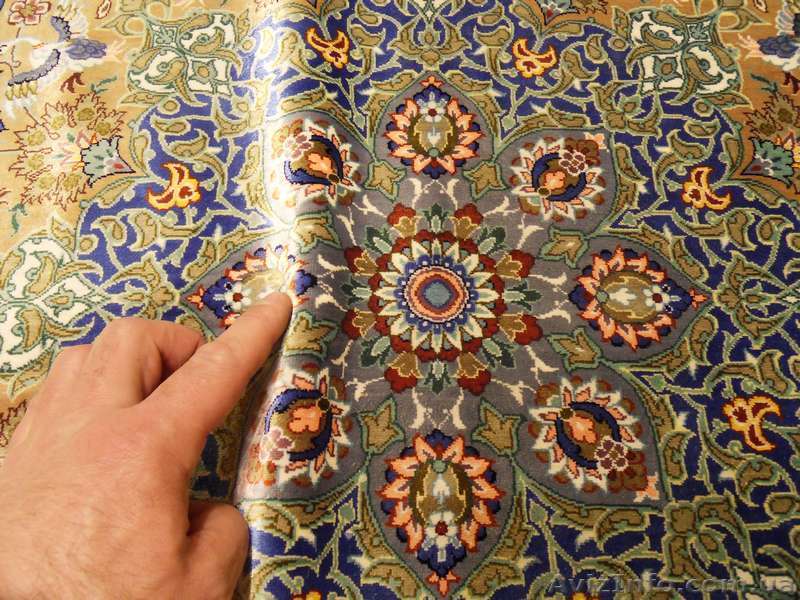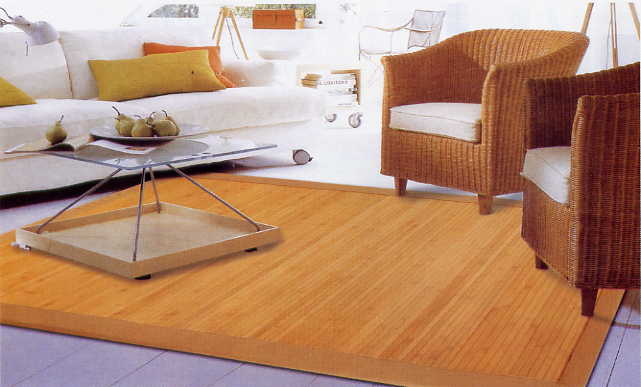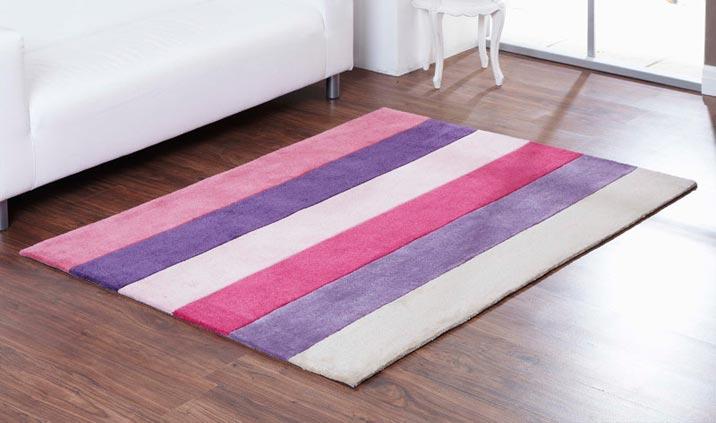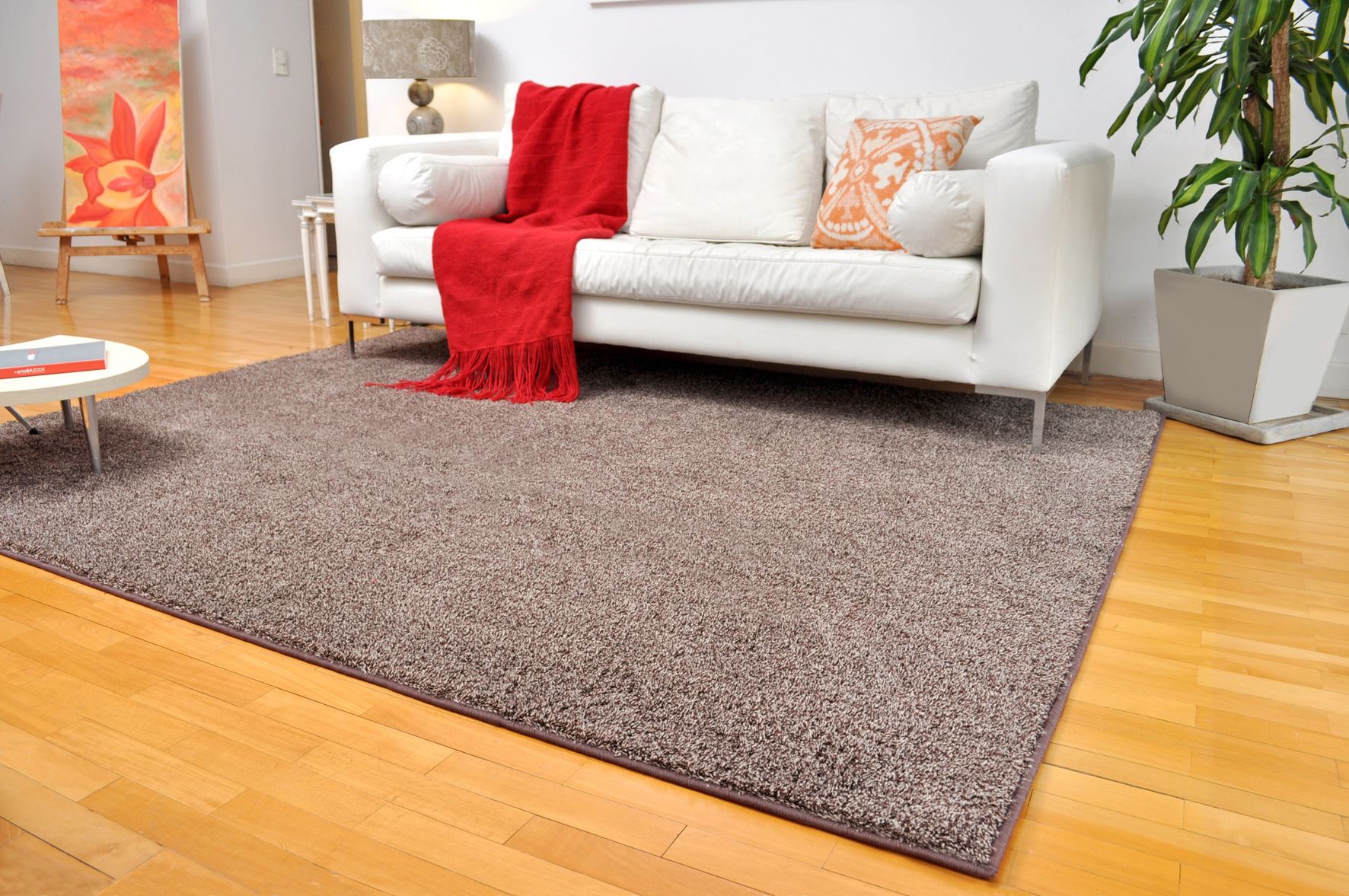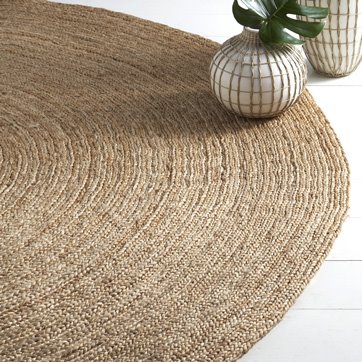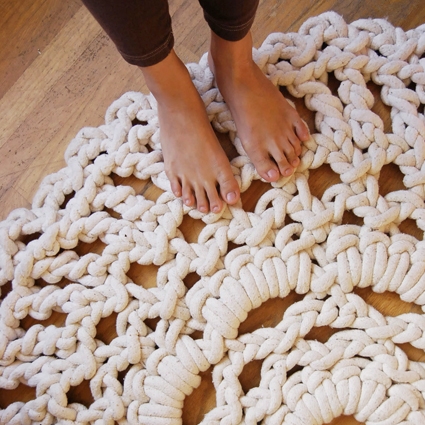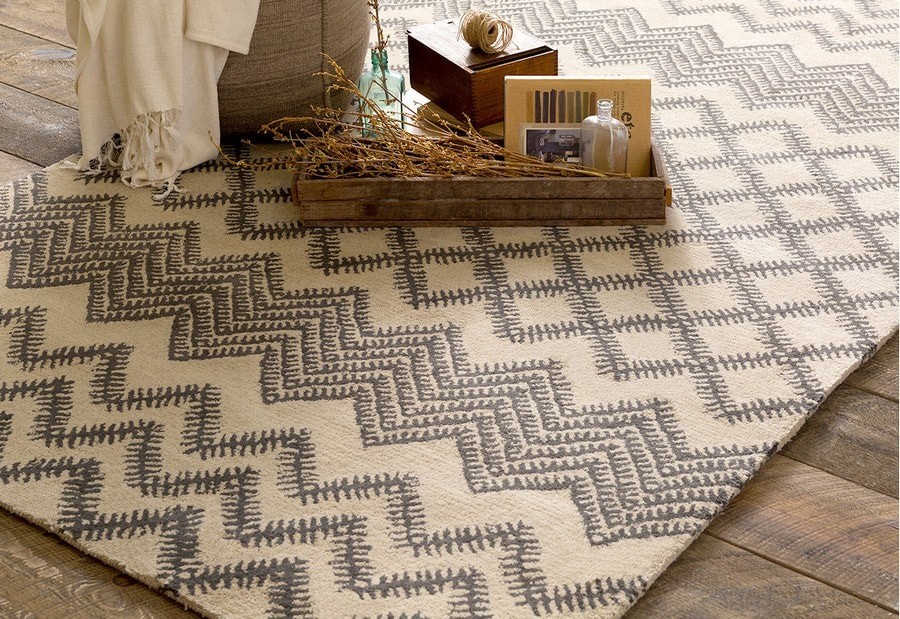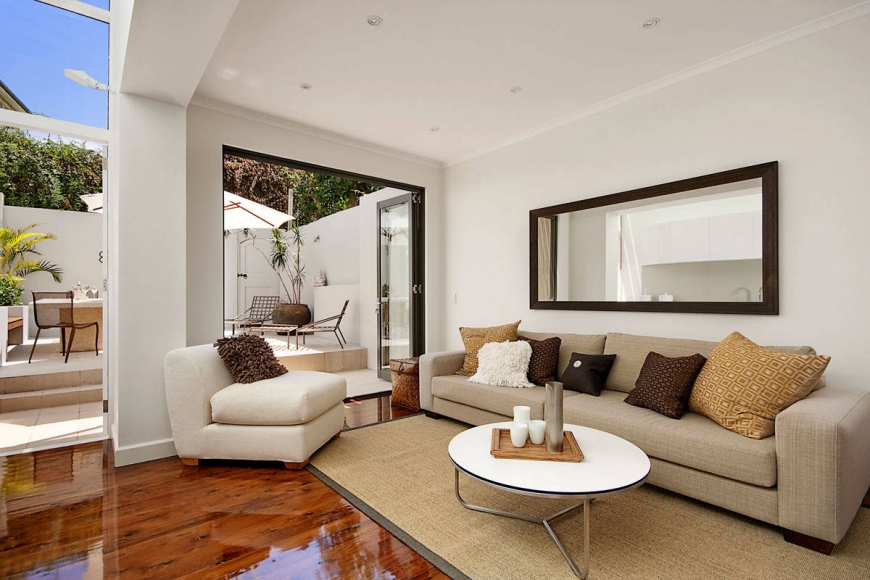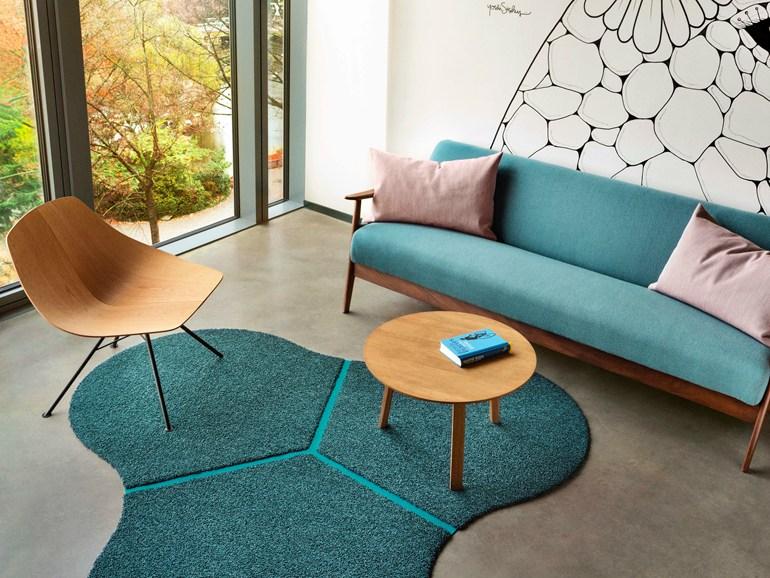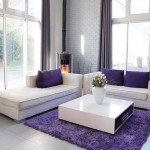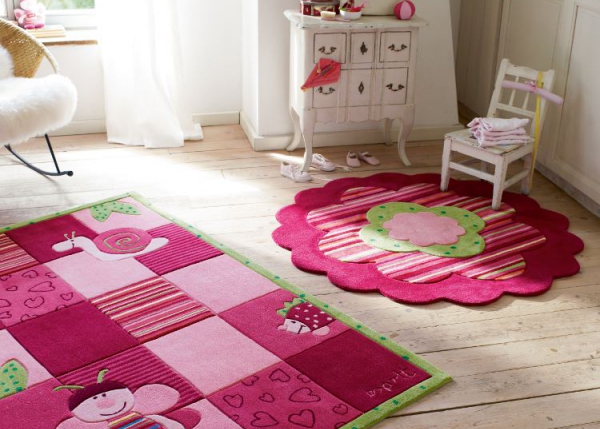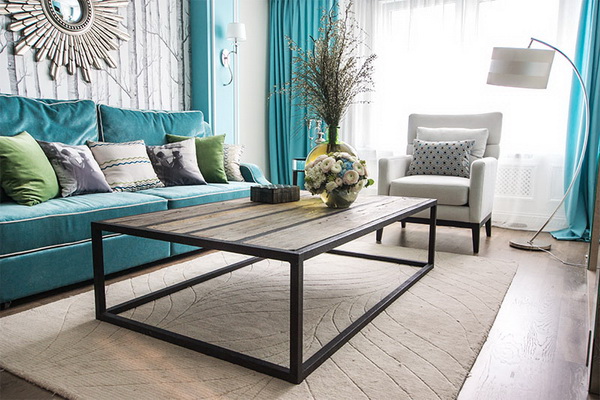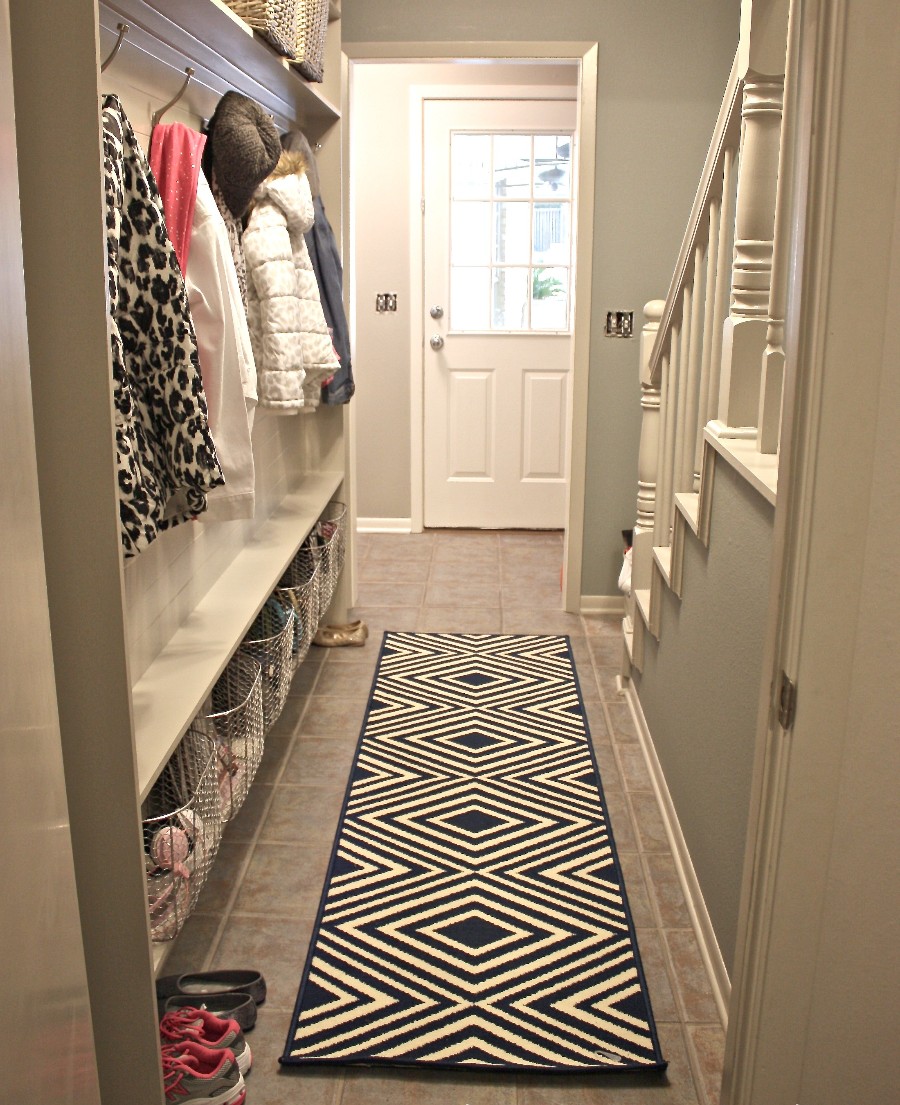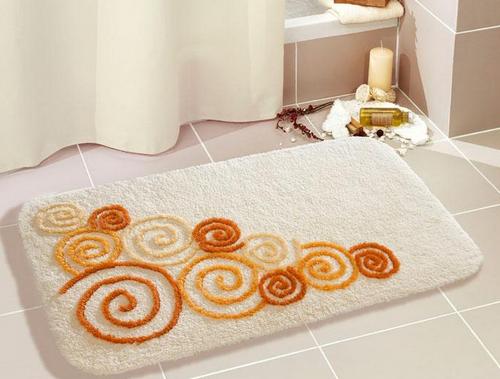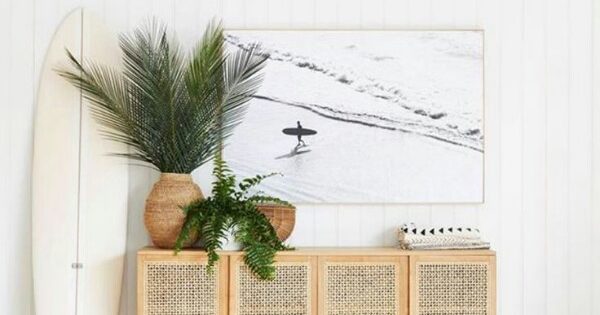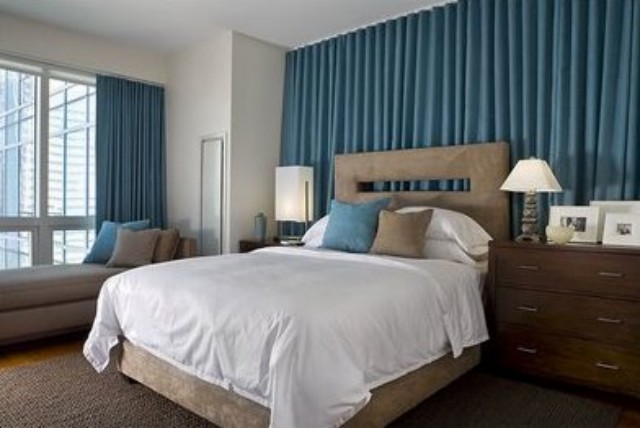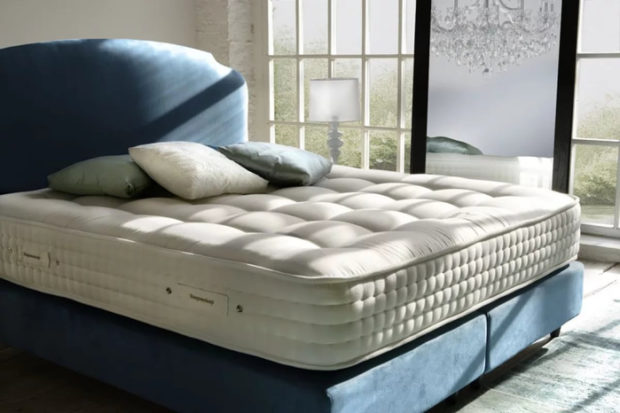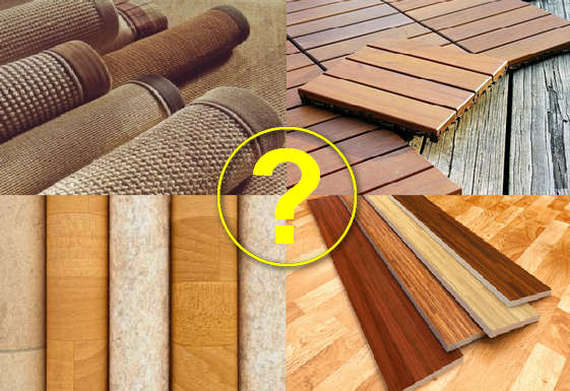9 tips for choosing a carpet on the floor: in the living room, nursery, bedroom
A carpet is a decoration of a room, comfort, warmth, pleasant tactile sensations and sound absorption. It remains only to choose it correctly. The days are gone when the carpets proudly appeared on the walls and covered the entire floor in the rooms, from wall to wall. Today, approaches to design and execution have changed, but high-quality and beautiful carpets are still in fashion. We figure out how to choose the right carpet, which material to give preference to, what should be the pile, pattern, size and shape.
Do not confuse carpet with carpet.. They are united by the presence of a base and a pile, but carpet - This is an independent floor covering, which is sold in rolls and is laid from wall to wall. Carpets have a finished design and pattern, finished edges and are used for decoration, laid on certain parts of the floor on top linoleum, parquet, laminate flooring etc.
No. 1. Carpet Material
The classic materials for making carpets are wool and silk. From time immemorial and until now, such carpets have been considered the highest chic, but not everyone can afford them, and far from always they are appropriate in modern housing.
Depending on the material used, all Carpets are divided into the following types:
- natural from sheep’s wool, silk, cotton and animal skins. These are the most expensive carpets, they look great, but require specific care;
- artificial fiber carpets often confused with synthetic. Artificial fibers are those that were produced from natural raw materials through processing and chemical reactions. A striking example is viscose, which is obtained from cellulose fibers;
- synthetic fiber carpets - It is actually a completely artificial product. Fibers are obtained by processing petroleum products, gas and coal. This group includes acrylic, elastane, polyester, polyamide and others. These are durable and easy to operate products.
On sale today you can find both completely natural and synthetic options, and partially synthetic carpets in which several types of fibers are mixed. The latter are considered the best option because they retain the benefits of wallpaper types of fibers. However, even fully synthetic carpets today by touch almost do not differ from natural ones.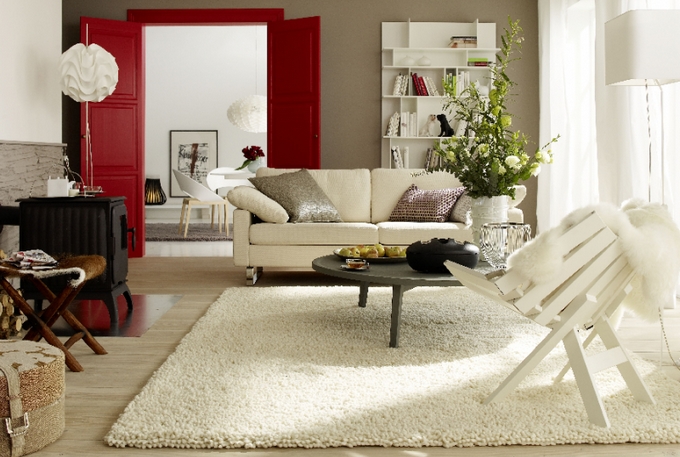
No. 2. Natural carpets
The following types of carpets are natural:
- woolen carpets. These are warm, pleasant to the touch products that retain heat well, absorb sound, hardly absorb moisture and resist the spread of fire. Wool is painted worse than synthetics, so natural carpets will not have bright colors. Of the minuses of woolen carpets, the high price and ability to accumulate a static charge, so they will not suit allergy sufferers. Wool is subject to damage. moth and mold, but modern special impregnations reliably protect the product. Durability up to 50 years. Woolen carpets are made mainly from sheep wool. There are options from goat and camel wool, but these are rather exclusive products;

- silk rugs They are even more expensive than woolen, but differ in incredible strength, a pleasant surface and a characteristic shine. From fine threads create beautiful detailed drawings.Silk carpets are treated as works of art, so they are not placed on the floor;

- cotton rug to the touch even softer than woolen, it absorbs moisture well, allows air to pass through. For allergy sufferers, such products are not scary, they are easy to clean, but over time they can deform, wrinkle and shrink, especially if they are used in rooms with constantly high humidity. Usually wool threads are added to cotton threads, which is why the quality only improves;

- animal skin rugs look impressive in some interior styles, have high heat and sound insulation, but require constant care. Usually cow hides are used, less often a boar or a bear. More often, artificial imitations of animal skins are used in apartments - it is no less beautiful, but more practical and environmentally friendly;

- leather carpets not widely used, but in a certain style of interior they are able to find application. They are made from pieces of leather, the products are easy to care for, but not durable;

- bamboo rugs play a purely decorative role in the interior, as their surface is solid. Fits perfectly in eco style and exotic interior styleThey are wear-resistant, but do not tolerate constant exposure to moisture.

No. 3. Carpets made of artificial and synthetic fibers
Synthetic and artificial products due to price, wide selection and excellent performance have gained more popularity. These include:
- acrylic carpets. Acrylic is one of the varieties of polyester fabric along with microfiber and polyester. Acrylic Carpets - Great natural wool substitutes, pleasant to the touch, lightweight, fireproof, do not fade in the sun and do not cause allergies and at the same time are inexpensive. They are inferior in terms of wear resistance to their natural counterpart - woolen carpets;

- viscose carpets possess high durability and wear resistance. Such coatings are almost not rubbed, do not wrinkle and are not electrified. If you need to choose a carpet for the living room, where there are always a lot of people, then the option of viscose is perfect. Due to the characteristic luster, the fiber began to be called "Artificial silk". Less - the ability to absorb moisture and lose at the same time part of the positive performance;

- polyamide carpets. Polyamides mean a whole group of substances, and nylon is usually used for carpet production. Among the advantages are durability, strength, elasticity, wear resistance, ease of care and high drying speed after washing. The disadvantages include the ability to electrify and burn out. The appearance of the carpets is excellent;

- polypropylene carpets - A find for those who want to devote a minimum of time to caring for the product. Since the polypropylene thread is smooth, it does not allow dust to pass through and does not accumulate, and ordinary vacuum cleaning allows you to completely clean the carpet. In addition, such products have saturated bright colors and are not very expensive, but, unfortunately, are short-lived. Polypropylene carpets also include products from hit set - These are fibers impregnated with anti-mud and antiseptic agents, due to which they receive increased resistance to external negative factors.

Number 4. Methods for making carpets
Carpets can be made either manually or by machine. The latter have gained the greatest distribution, since manual work costs a lot of money. The manual method involves the use of only natural materials, one carpet can be created by several workers for tens of days, so the price is corresponding - about a thousand dollars per square meter. Machine production allows you to create products of a sufficiently high quality, and sometimes such carpets successfully pass for manual work.
By the method of production, carpets are:
- tufted. They are made by passing threads through the primary base and returning them through it with the same hook, resulting in a loop. The loops can be of different heights, whole or cut, combined. So that they do not break out, they are fixed with latex, after which a tissue or foamy secondary base is applied;

- needle-punched. These are lint-free carpets, which are made by driving threads into the base with needles. The threads become tangled and intertwined, forming a dense dense coating, which is then additionally fixed. Outwardly inferior to carpets of other production methods;

- woven carpets made by simultaneous connection of the primary warp and pile threads. This is a long process that affects cost;
- wicker carpets obtained as a result of enveloping the warp threads with nodules.
No. 5. Type of pile
One of the most important parameters that almost the primary attention is paid to when choosing a carpet is pile length and structure. Carpets are divided into pile and lint-free. The first ones are cozy and soft, but in places with a heavy load (for example, hallways) Lint-free carpets behave much better.
Depending on the length of the pile, carpets can be
- long hair;
- mid-level;
- short-haired.
Pile length varies from 0.5 to 10 cm and sometimes more. The longer the pile, the more it is deformed under heavy furniture, more difficult to maintain and less durable. A long pile is appropriate in bedrooms, and in living rooms it is better to use carpets with short and medium pile.
Pile can have a different structure:
- loop single. These are carpets in which the pile consists of loops of the same height. Such products have high wear resistance;
- loopback multilevel suggests, as the name suggests, the presence of loops of different heights. Such carpets have an interesting relief pattern;
- velours - these are cut loops with a height of not more than 1 cm. The surface is smooth, resembles velvet;
- saxony - This is a trimmed twisted pile, forming a grainy surface, looks excellent, belongs to the elite carpets;
- frize - a high twisted pile, forming a heterogeneous soft surface, in which dirt and traces of steps are easily hidden;
- cut-loop - a combination of low loops and high cut pile, forming a beautiful three-dimensional pattern.

The correct choice of carpet is impossible without taking into account pile density. This indicator is determined by the proximity of the villi with respect to each other. The higher the density, the more resistant the carpet. This indicator is especially important for hallways and living rooms, less important for a bedroom, where the impact on the product will be minimal.
No. 6. Carpet Dimensions
A couple of dozen years ago, the gold standard for using carpet was its full coverage of the entire area of the room (sometimes even walls). This was done not so much for aesthetic reasons as for the sake of preserving heat. Today, when effective heat insulating materials, this is no longer necessary - the room looks much nicer when the carpet covers only part of it. This allows him to perform another function - zoning the room. With the help of the carpet you can distinguish a recreation area with a sofa and armchairs, a zone about fireplace, dining area, etc.
The size of the carpet is chosen depending on the parameters of the room and the tasks assigned to it. Conventionally, carpets can be divided into:
- small with an area of up to 3 m2;
- medium with an area of 3-6 m2;
- large with an area of more than 6 m2.

Small items They are used as highlighting individual zones in the room, and also serve as bright and functional accessories that place accents in the room. Special care and attention should be given to the choice. large carpets: products in which the side is more than 2.5 m, attract the eye and become the center of the room. It is better if it will be a carpet of calm monophonic coloring.
To determine the required carpet size, You can lay out the required shape on the floor with a ribbon or thread and, based on your purchase, focus on the parameters obtained.
Number 7. The location of the carpet relative to furniture
There are several options for the location of the carpet relative to furniture:
- if the carpet is placed in front of the sofa in the living room, then its length should exceed the length of the sofa by 20-50 cm. The width at the same time varies from 1.5 to 2.5 m or more, depending on the space that remains in front of the sofa. Designers advise to put the sofa legs on the edge of the carpet, retreating 20-30 cm;

- often the entire soft group is placed on the carpet together with a coffee table. This option is used in studio apartments and living rooms combined with the kitchens. Thus, a recreation area is distinguished, and all its attributes are combined together. The size of the carpet is quite large and depends on the parameters and number of items of upholstered furniture;

- if it is assumed that the carpet will occupy a large part of the room’s area, do not put it from wall to wall - this is only relevant for creating an interior in the style of past eras. Indent from the walls must be at least 40 cm;

- often carpet is used under dining table with chairs especially when lunch group must be allocated in a spacious room. The carpet should be wider and longer than the table, on each side the indentation is 60-80 cm, so that the chair can be freely extended, preventing it from falling over the edge of the carpet;

- in the bedroom use a large carpet that covers all the space under the bed and bedside tables and goes 50-100 cm beyond them so that it is comfortable to get out of bed. Another option is a pair of identical bedside rugs;

- if the carpet has a bright color or a motley color that contrasts with the furniture, between it and all pieces of furniture leave a gap of 15-20 cm and not less, otherwise you can get gypsy;

- when the carpet practically repeats the pattern of the floor covering, it can be positioned as you wish;
- It is not recommended to place furniture with massive flat legs on a carpet with a long pile, but it is just allowed to place light pieces of furniture.
Number 8. Carpet shape and color
The shape of the carpets can be very diverse:
- rectangular products have become classics, suitable almost always and everywhere;
- round and oval rugs allow you to effectively arrange one of the zones in the room;
- carpets that look like a sofa, a coffee table or other elements of the interior look great, but when changing the situation it can be difficult to fit into a new interior;
- irregular and fancy carpets (in the form of a cut of a stump, flower, animal skin, blotch spot, concentric circles, bee honeycombs, with openwork edges) become a memorable interior detail.

There are even more color schemes than possible forms. When choosing the right shade for your carpet, consider the following unwritten rules:
- by tonality the carpet should combined with flooring. This does not mean that they should be the same color, but they must harmonize the shades;
- large rugs with original patterns (geometric, abstract) is used in large rooms where furniture, decoration and curtains mostly calm monophonic shades, otherwise the room will be overloaded with various patterns and ornaments;
- designers sometimes use the technique of repeating the pattern of curtains or upholstered furniture on the carpet, but good results can be achieved if these colors do not “tear your eyes out”;
- in small and insufficiently lit rooms, it is better to use light and warm shades, living rooms and bedrooms facing south are allowed cold shades.
No. 9. Carpet and room type
It will not be surprising to anyone that carpet covers of various types are suitable for different rooms of an apartment:
- in the bedroom use long-pile carpets, you can use natural ones (if the budget allows).The colors are calm, muffled, soft, corresponding to the color scheme of the room;

- for children's rooms short-pile rugs with a bright pattern are suitable. It is important that the product is safe for health;

- for living rooms often choose large carpets with a low pile and an interesting design, but you can limit yourself to a not very large pressed-in rug;

- in hallways Carpets are also used, but mostly lint-free or with minimal pile. Rubber-based products are great - they are less prone to abrasion;

- in bathrooms rarely use carpets, but when you can’t do without them, it is better to use products made of foam rubber or cotton rugs, but they will not be particularly durable.

The modern market offers carpets of the most incredible shapes and colors, there are even products stylized as famous works of art. A correctly chosen carpet brings home comfort and sets the mood.


